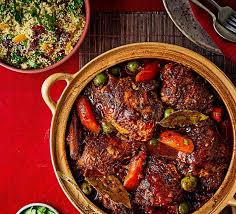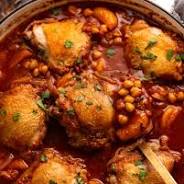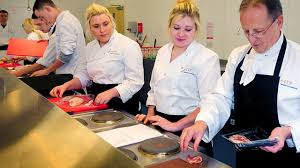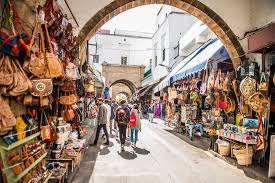Exploring the Flavours of Moroccan Cooking
When it comes to culinary delights, Moroccan cuisine stands out for its vibrant flavours, aromatic spices, and rich textures. Rooted in a blend of Berber, Arab, and Mediterranean influences, Moroccan cooking is a true reflection of the country’s diverse cultural heritage.
The Essence of Moroccan Cuisine
At the heart of Moroccan cooking are tagines – slow-cooked stews that combine tender meat, poultry, or fish with a medley of vegetables and fruits. The secret lies in the intricate blend of spices such as cumin, cinnamon, saffron, and ginger that infuse each dish with a tantalising aroma.
Flavourful Ingredients
From couscous to pastilla (a savoury pastry), Moroccan cuisine makes use of a variety of ingredients that add depth and complexity to its dishes. Olives, preserved lemons, almonds, and honey are just a few examples of staples that enhance both savoury and sweet recipes.
The Art of Tea Making
No discussion of Moroccan cooking is complete without mentioning mint tea – a ubiquitous drink that symbolises hospitality and warmth. The traditional preparation involves steeping fresh mint leaves with gunpowder green tea and generous amounts of sugar for a refreshing beverage enjoyed throughout the day.
Culinary Traditions
Moroccan cooking is not just about preparing food; it’s also about sharing meals with loved ones in a convivial atmosphere. The act of breaking bread together fosters bonds between family members and friends while celebrating the joys of good food.
Regional Specialties
Each region in Morocco boasts its own culinary specialties influenced by local produce and traditions. From the seafood-rich dishes along the coastal towns to the hearty lamb tagines found in the Atlas Mountains, exploring Morocco’s diverse gastronomic landscape is an adventure in itself.
Culinary Delights Await
Whether you’re savouring a steaming bowl of harira soup during Ramadan or indulging in sweet pastries like baklava or chebakia during Eid celebrations, Moroccan cooking offers an array of delectable treats waiting to be discovered.
Frequently Asked Questions About Moroccan Cooking: Ingredients, Traditional Foods, Spices, and Cooking Styles
- What ingredients are used in Moroccan cooking?
- What is the traditional food in Morocco?
- Which spices are Moroccan?
- What is the cooking style in Morocco?
What ingredients are used in Moroccan cooking?
In Moroccan cooking, a rich tapestry of ingredients is employed to create the vibrant and aromatic dishes that define the cuisine. Essential components include a variety of spices such as cumin, cinnamon, saffron, and ginger, which infuse each dish with a depth of flavour. Staples like olives, preserved lemons, almonds, and honey add complexity and richness to both savoury tagines and sweet pastries. Fresh herbs like mint and coriander are also commonly used to enhance the freshness of dishes. The combination of these ingredients reflects the diverse cultural influences that have shaped Moroccan culinary traditions over centuries.
What is the traditional food in Morocco?
Morocco is renowned for its rich and diverse culinary heritage, with traditional dishes that tantalise the taste buds and reflect the country’s vibrant culture. When asked about the traditional food in Morocco, one cannot overlook the iconic tagine. This slow-cooked stew, named after the earthenware pot it is cooked in, typically features a blend of tender meat or poultry, vegetables, fruits, and a harmonious mix of spices like cumin, cinnamon, saffron, and ginger. Alongside tagines, couscous holds a special place as a staple in Moroccan cuisine. This fluffy semolina dish is often paired with savoury stews or served as a base for a variety of toppings, showcasing the intricate flavours and textures that define Moroccan cooking.
Which spices are Moroccan?
Moroccan cuisine is renowned for its bold and aromatic flavours, largely attributed to a distinctive blend of spices that characterise the country’s culinary identity. Some of the key spices commonly found in Moroccan cooking include cumin, cinnamon, paprika, ginger, saffron, turmeric, and coriander. These spices are expertly combined to create complex and harmonious flavour profiles in traditional dishes such as tagines, couscous, and pastillas. The use of these spices not only adds depth and richness to Moroccan cuisine but also reflects the country’s historical trade routes and cultural influences.
What is the cooking style in Morocco?
The cooking style in Morocco is a harmonious blend of diverse culinary influences that have shaped the country’s rich gastronomic heritage. Characterised by slow-cooking methods, intricate spice blends, and the use of fresh ingredients such as aromatic herbs, dried fruits, and nuts, Moroccan cuisine is known for its bold flavours and textures. The traditional cooking vessel, the tagine, plays a central role in Moroccan cooking, allowing ingredients to simmer and meld together to create dishes that are both hearty and fragrant. Whether it’s savoury tagines infused with a mix of spices or sweet pastries drizzled with honey and almonds, Moroccan cooking embodies a perfect balance of sweet, savoury, and aromatic elements that delight the senses.




